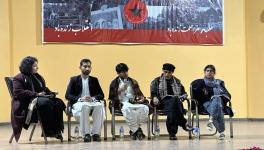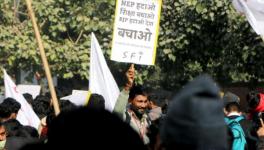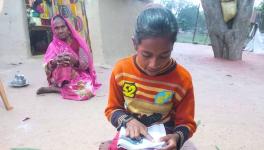A Decade After Implementation of RTE, 25% Reservation for Students Pending in Puducherry
Representational use only.
The Right of Children to Free and Compulsory Education Act or Right to Education (RTE), 2009, is yet to be completely implemented in the Union Territory of Puducherry. The 25% reservation in unaided private schools for children from disadvantaged groups and weaker sections remains only in paper.
Replies received through Right to Information (RTI) act has confirmed that not even a single student has been admitted as per the RTE act in any of the schools in Puducherry.
TheUT notified the guidelines for implementation of the act in November 2012, three years after the introduction of the RTE, only after the Campaign Against Child Labour (CACL) approached the Madras High Court seeking the implementation of the act.
The GOs and circulars, relating to the RTE were published in the government gazette, but are not published in the public domain.
The UT has made commendable strides in several factors prescribed in the RTE, including the availability of toilets, libraries, drinking water, medical facilities among others, but the crux of the act on reservation remains unfulfilled.
‘NO GO ISSUED FOR 25% RESERVATION’
The RTE came into force in April 2010 after being passed by the two houses of Parliament, followed by the approval of the President of India. The UT did not even notify the implementation of the act till November 2012, until the court order mandated it to do so.
Commenting on the status of the RTE, P Joseph Victor Raj, director of Holistic Approach for Peoples Empowerment (HOPE), an organisation based in Puducherry, said, “Neither any circular nor any GO has been issued to ensure 25% reservation for children of disadvantaged groups and weaker sections from the neighbourhood area till date.”
The RTI replies obtained by the organisation has found that no student has been admitted in any of the aided or unaided schools in the UT.
Also read: India’s Right to Education is a Failing in Reality
“We have been obtaining details frequently through RTI every three years on the number of students admitted through RTE, the replies so far have not named a single student being a beneficiary of the RTE,” he added.
The political parties, youth and student organisations continue to reiterate the demand for total implementation of RTE without much delay.
‘ORDERS NOT IN PUBLIC DOMAIN’
The government of Puducherry has issued orders and circulars on the other aspects mentioned in the RTE, but are not made public by the concerned department.
The government issued circulars prohibiting screening procedures for admission, banning corporal punishment, procedure for renewal of recognition of schools, orders for admissions beyond July 31 and that production of birth certificates and transfer certificates shall not be insisted upon and an order for constitution of School Management Committee between 2010 and 2012.
“When I spoke to the media about the status of the act immediately after the notifications were issued, the government officials informed the media that relevant orders have been passed by the government. But, apart from being published in the gazette, it's not available in the public forum, including in the website of the Education Department till now, even as nine years have passed by,” Victor added.
While the UT government in 2016 said that the RTE is implemented in a phased manner, “but the crux of the RTE, 25% admission for students from disadvantaged groups and weaker sections is still pending,” he highlighted
‘PRIVATE SCHOOLS GET LION’S SHARE OF STUDENTS’
The UT has a total of 741 schools across Puducherry, Karaikal, Mahe and Yanam districts, of which 422 are government schools, 33 are aided schools and 286 are unaided private schools as per the information available with the Department of School Education and Literacy of the Union Ministry of Education.
Though the government schools account for 57% of the total schools, only 30.8% of the total students get educated here. The 38.6% of the private unaided schools have the lion's share of the 58.8% of the total students.
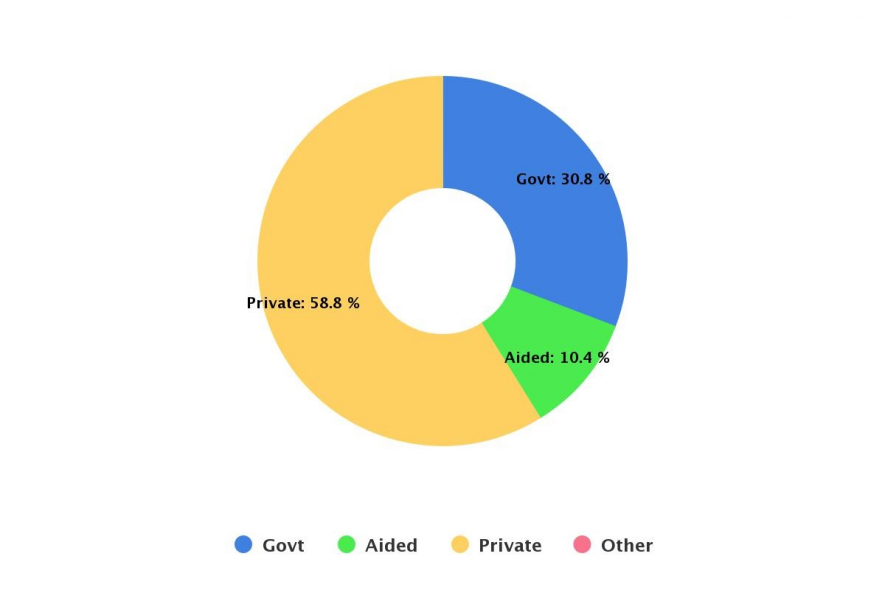
Image Courtesy: Department of school education and literacy, Union ministry of education
Of the 422 government schools, 280 provide education upto class VIII, while only 49 educate till higher secondary. On the contrary, 108 private unaided schools provide education till higher secondary classes. These private schools educate from primary to higher secondary and hence attract the larger stake of the students.
The provision in the RTE act is not applicable to unaided minority institutions, which is cited as the reason for the non-implementation of the act in the UT. The minority schools are exempted to ensure that the students of the minority community and religion are not affected by the provision.
But, only 13 higher secondary schools fall under this category, which had around 50% of the students in private schools during 2014, as reported by the New Indian Express.
“We met the then Chief Minister N Rangasamy soon after the court ruled to implement the act in 2012. One suggestion he made was to improve the infrastructure of the government schools instead of admitting students to private schools with less demand, which sounded sensible. The few aided schools in the UT, had less takers, while people rush to unaided schools,” Victor added.
‘ENROLMENT REDUCE IN GOVT SCHOOLS’
The enrolment in government schools has seen a downward trend since 2010-11, but for the recent rush for admission in government schools due to the COVID-19 pandemic.
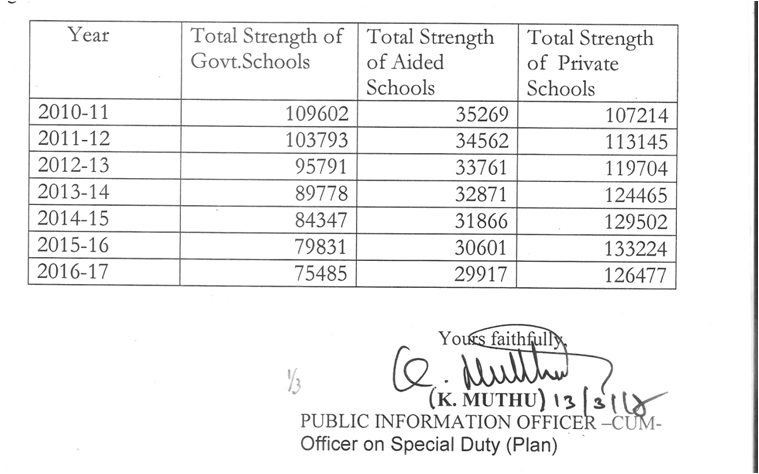
RTI reply obtained by HOPE, Puducherry
The increase in private unaided schools and closure of government schools have been recorded in the UT since 2012-13. The number of government schools reduced from 439 in 2012-13 to 422 in 2019-20, while the number of private schools increased from 245 to 286 in the same period.
The policy change of the Union government in promoting more private players in the education sector and reduction of budget allocations have hardly helped the growth of government institutions.
Also read: NEP: India Takes a Great Leap Backwards
“Rangasamy has again become the CM. The onus is on him to ensure that the government school infrastructure is strengthened and admissions are increased in government schools,” Victor said.
POSITIVE IMPACTS OF RTE
The implementation of RTE in the UT has had constructive impacts in the educational sector. The student teacher ratio has improved from 24:1 in 2012-13 for primary schools to 18:1 in 2019-20. The higher secondary section saw a massive jump in the ratio from 68:1 to 16:1 in the same period.
The facilities for hand wash, health and libraries have witnessed massive improvements as well.
The government has ensured the implementation of no retention of students in the same class till class 8, and has also helped in reducing the dropout rate. The transition rate from one class to another remains high compared to most other states.
The process of improving infrastructure is a long process, which has made little strides in the last decade. The education minister in the previous government claimed that despite better infrastructure in government schools, parents are preferring private schools for educating their children.
Get the latest reports & analysis with people's perspective on Protests, movements & deep analytical videos, discussions of the current affairs in your Telegram app. Subscribe to NewsClick's Telegram channel & get Real-Time updates on stories, as they get published on our website.









